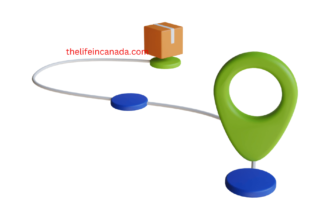Introduction
As the temperature drops and the first flakes begin to fall, Canadians know that winter has arrived. Snow is an integral part of Canada’s identity, shaping its landscapes, culture, and daily life. From the coastal regions to the prairies, and from the bustling cities to remote northern communities, snow plays a significant role in the Great White North. This article delves into the fascinating world of snow in Canada, exploring its impact, beauty, and challenges.
The Science Behind Canadian Snowfall
Formation and Types of Snow
Snow forms when water vapor in the atmosphere condenses directly into ice crystals. In Canada, various types of snow can be observed:
- Powder snow: Light and fluffy, perfect for skiing
- Wet snow: Heavy and ideal for making snowballs
- Graupel: Soft, small pellets of ice
- Lake-effect snow: Common near the Great Lakes, caused by cold air moving over warmer water
Snowfall Patterns Across the Country
Canada’s vast geography results in diverse snowfall patterns:
- The Pacific Coast receives less snow due to milder temperatures
- The Prairies experience dry, light snow and occasional blizzards
- Central Canada sees heavy snowfall, especially around the Great Lakes
- The Arctic regions have long periods of snow cover, sometimes year-round
“In Canada, snow isn’t just weather; it’s a way of life.” – Anonymous Canadian
Snow’s Impact on Canadian Life
Winter Recreation and Tourism
Snow transforms Canada into a winter wonderland, attracting tourists and outdoor enthusiasts:
- Skiing and snowboarding in world-class resorts
- Ice fishing on frozen lakes
- Snowmobiling through vast wilderness areas
- Dog sledding in the northern territories
Economic Considerations
Snow significantly influences Canada’s economy:
- Winter tourism brings billions of dollars annually
- Snow removal costs cities millions each year
- Agriculture benefits from snow’s insulating properties
- Hydroelectric power generation relies on snowmelt
Transportation and Infrastructure Challenges
Dealing with snow is a constant challenge for Canadian cities:
- Snow plowing and road salt application
- Public transit delays and cancellations
- Airport operations affected by snowstorms
- Increased accident risks on snowy roads
Cultural Significance of Snow in Canada
Snow in Canadian Art and Literature
Snow has inspired countless Canadian artists and writers:
- Group of Seven paintings depicting snowy landscapes
- Lucy Maud Montgomery’s descriptions of wintery Prince Edward Island
- Indigenous art representing snow and winter themes
Winter Festivals and Traditions
Canadians embrace the snowy season with various celebrations:
- Quebec Winter Carnival
- Ottawa’s Winterlude
- Yukon Quest dog sled race
- Local community winter festivals across the country
Climate Change and the Future of Snow in Canada
Observed Changes in Snowfall Patterns
Recent decades have shown shifts in Canada’s snow patterns:
- Reduced snowpack in many regions
- Later start to the snow season in some areas
- Increased frequency of rain-on-snow events
Potential Impacts on Ecosystems and Human Activities
Changes in snowfall could have far-reaching consequences:
- Altered wildlife habitats and migration patterns
- Impacts on winter tourism and recreation industries
- Changes in water availability for agriculture and hydropower
- Increased flooding risks in some regions
Conclusion
Snow is more than just frozen water falling from the sky in Canada; it’s a fundamental aspect of the nation’s identity, economy, and way of life. From the challenges it presents to the beauty it creates, snow shapes the Canadian experience in countless ways. As climate change alters snowfall patterns, Canadians will need to adapt while continuing to cherish and celebrate their snowy heritage. Whether you’re building a snowman, hitting the slopes, or simply admiring the serene white landscape, snow remains an essential part of what makes Canada unique.



